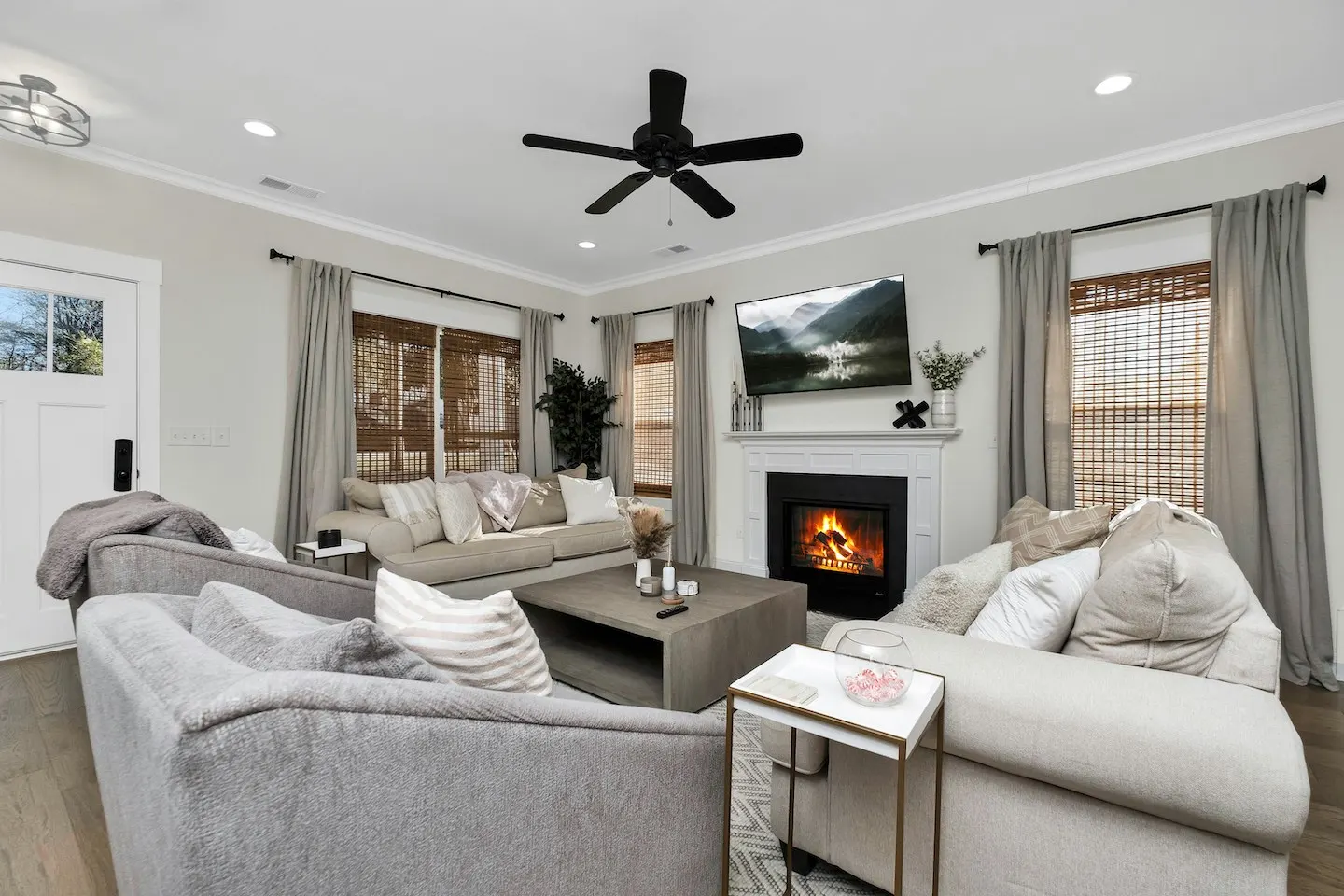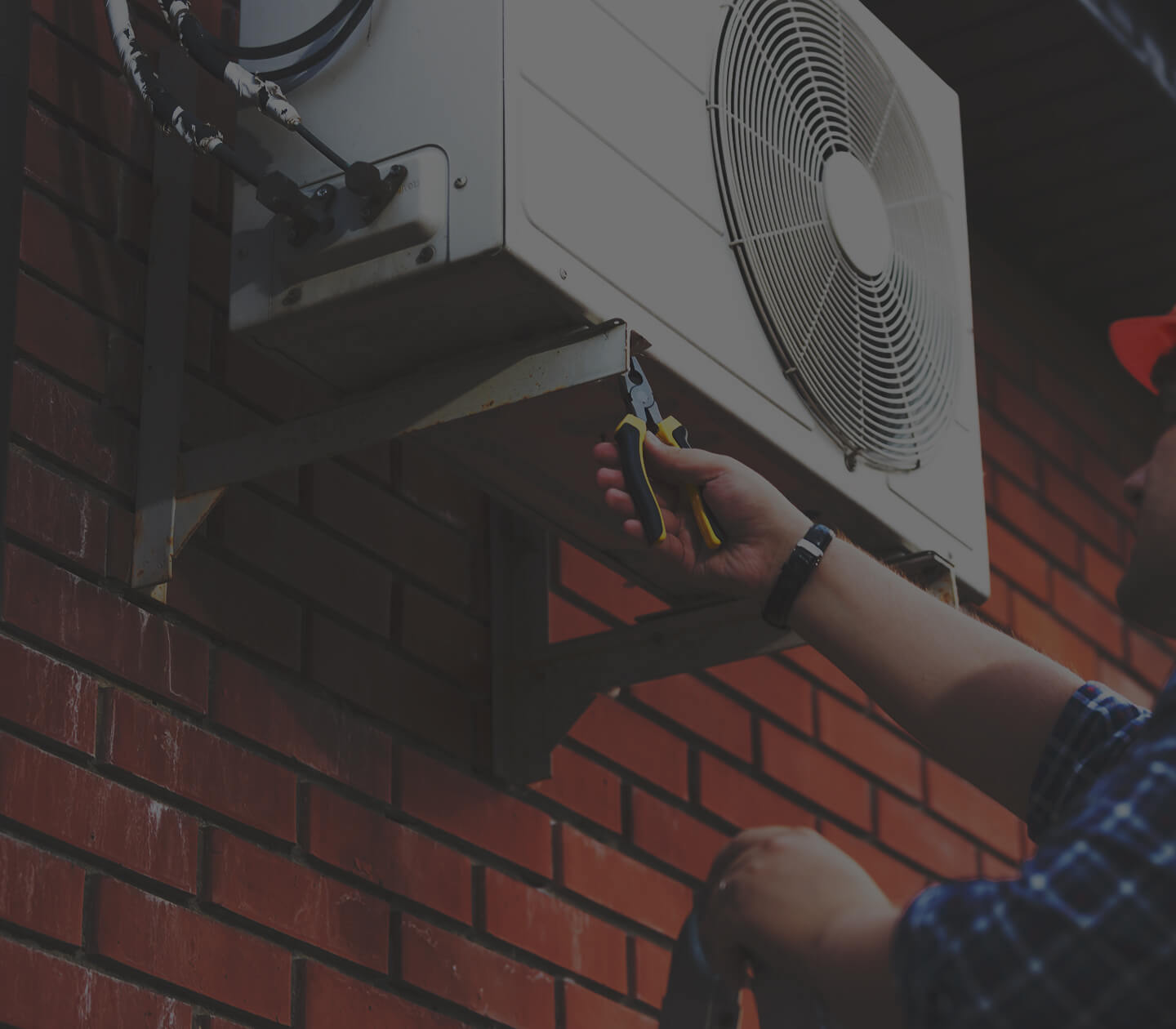Ceiling fans are an essential component of home comfort, yet many homeowners are unaware of how to maximize their effectiveness. One of the most common topics of confusion is ceiling fan direction. Should your fan spin clockwise or counterclockwise? Does the direction need to change with the seasons? And how does fan direction interact with air conditioning?
In this comprehensive guide, we’ll address these questions and more, debunk common myths, and explain the high vs. low leading edge concept.
Understanding Ceiling Fan Direction
The direction in which your ceiling fan spins can make a significant difference in your home’s comfort levels and energy efficiency. Ceiling fans typically have a switch on the motor housing that changes the direction of the blades.
- Counterclockwise Direction (High Leading Edge) in Summer: During the warmer months, your ceiling fan should spin counterclockwise. When the leading edge of the blade is higher than the trailing edge, the fan pushes air downward, creating a wind-chill effect. This makes the room feel cooler, allowing you to raise your thermostat a few degrees without sacrificing comfort.
- Clockwise Direction (Low Leading Edge) in Winter: In the colder months, your ceiling fan should rotate clockwise. With the leading edge lower than the trailing edge, the fan pulls cool air upward, which in turn pushes the warm air that rises to the ceiling down along the walls and back into the living space. This redistribution of warm air can help maintain a more consistent room temperature, reducing the need for extra heating and thereby saving energy.
High vs. Low Leading Edge Explained
The concepts of high vs. low leading edge relate to the angle at which the fan blades cut through the air:
- High Leading Edge: When the leading edge of the blade is higher than the trailing edge, it means the fan is set to push air downward. This is the counterclockwise direction used in summer. The high leading edge creates a direct airflow that cools the room’s occupants.
- Low Leading Edge: When the leading edge is lower, the fan pulls air upwards, resulting in a clockwise rotation used in winter. This helps to mix the air in the room, pulling warm air down from the ceiling without creating a strong breeze.
Understanding these principles helps in setting the correct fan direction for each season, thereby enhancing your home’s heating and cooling efficiency.

The Ceiling Fan Direction Myth
A common myth about ceiling fan direction is that changing the fan’s spin can significantly alter the room’s temperature. While the fan’s direction can indeed impact air circulation and improve comfort, it does not change the actual temperature of the room. Instead, the fan direction optimizes airflow to either create a cooling effect in the summer or better distribute heat in the winter.
Ceiling Fan Direction with Air Conditioning
Integrating ceiling fan direction with air conditioning can further improve your home’s energy efficiency. Here’s how you can optimize your ceiling fan’s use:
- Summer Use: Set your ceiling fan to spin counterclockwise. The cooling breeze from the fan will allow you to set your air conditioner to a higher temperature, reducing energy consumption. The wind-chill effect can make a room feel up to 4 degrees cooler, enabling significant savings on your cooling bills.
- Winter Use: Switch your ceiling fan to clockwise rotation at a low speed. This helps distribute the warm air from your heating system more evenly throughout the room. By pushing the warm air down, you can maintain a comfortable temperature with less reliance on your heating system, leading to energy savings.

Practical Tips for Ceiling Fan Use
- Regular Maintenance: Ensure your ceiling fan is clean and well-maintained. Dust and debris can affect its efficiency and performance. Be sure to get regular AC maintenance and heating maintenance as well.
- Correct Installation: Ensure your ceiling fan is installed properly, with enough clearance from the ceiling and walls for optimal airflow. The expert team at Lee’s AC can install a variety of heating and cooling appliances, and guide you on the proper use of your fan to keep your home comfortable all season long.
- Energy-Efficient Models: Consider using ENERGY STAR-rated ceiling fans. These models are more energy-efficient and can help reduce your overall energy consumption.
- Complementary Lighting: Many ceiling fans come with integrated lighting. Choose energy-efficient LED bulbs to further enhance your energy savings.
- Smart Controls: Invest in smart ceiling fan controls. These can automate the direction and speed of your fan based on room temperature and occupancy, maximizing comfort and efficiency.
Enjoy Comfort Year-Round
Maximizing the efficiency of your ceiling fan – and therefore the comfort of your home – involves understanding the correct direction for each season, debunking common myths, and integrating fan use with your air conditioning and heating systems.
By setting your ceiling fan to spin counterclockwise in the summer and clockwise in the winter, you can enhance your home’s comfort while saving on energy costs. Remember, while the fan’s direction doesn’t change the actual room temperature, it significantly improves air circulation, creating a more comfortable and energy-efficient living environment.
Keep these tips in mind, and enjoy a more comfortable home year-round – if you’d like to speak with a team of cooling and heating experts in your area, book an appointment with Lee’s AC today.


